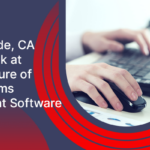How Claim Management Companies Can Enhance Their Practices
October 18, 2024
In the fast-paced field of insurance, quick claim handling is essential. It guarantees that policyholders receive prompt compensation and that insurers manage risk appropriately.
Claims software is a crucial facilitator of more efficient claims management. However, understanding the complexities of claims software can take time and effort for many insurers. So, we have come up with a comprehensive guide for you. In this comprehensive, we’ll look at the fundamentals of claims software, including its benefits and features, and how it changes insurers’ claims management landscape.
Understanding Claims Software
Claims software describes specific technological solutions to streamline and automate insurance companies’ claims processing procedures. These software systems come with several capabilities designed to manage different phases of the claims process, from the first notice to the last payment.
Key Components and Functionalities
Intuitive User Interface
User-friendly interfaces are a common feature of modern claims software, making it more straightforward for claims handlers to move through challenging procedures quickly. The learning curve for novice users is lowered, and overall operational efficiency is increased with intuitive interfaces.
Claims Intake and Registration
A smooth intake and registration process for new claims is made possible by claims software. It makes it possible for insurers to effectively gather crucial data, including policy details, claimant data, and event facts. This procedure is further streamlined by automated data validation and integration capabilities, which lower manual mistake rates and increase data accuracy.
Workflow Automation
The capacity of claims software to automate tedious activities and standardize workflows is one of its main benefits. Insurance companies may automate claim assignments, approvals, and communications by setting up predetermined rules and triggers. This ensures consistency and cuts down on processing times.
Document Management
Reports, images, and letters are just a few of the many papers frequently involved in claims. Robust document management features in claims software enable users to easily upload, arrange, and retrieve documents. Efficiency is further increased by automatic data extraction from documents, which is made possible by advanced capabilities like optical character recognition (OCR).
Communication and Collaboration
During the claims process, effective communication is crucial. Claims software makes it easier for policyholders, external partners, and internal stakeholders to collaborate and communicate. Communication channels are streamlined by integration with email, messaging services, and collaborative tools, guaranteeing prompt updates and resolution.
Analytics and Reporting
Process improvement and well-informed decision-making depend heavily on data-driven insights. With claims software’s powerful analytics and reporting features, insurers may get essential insights into claim trends, performance metrics, and key performance indicators (KPIs). Through the utilization of actionable information, insurers may pinpoint areas needing enhancement and promote ongoing optimization.
Integration and Scalability
The smooth integration of claims software with third-party apps and current systems allows data interchange and interoperability.
Further, scalable claims software systems enable insurers to develop and adjust to changing business requirements without sacrificing efficiency.
Benefits of Claims Software
Improved Efficiency and Productivity
Claims software dramatically improves operational efficiency and productivity by automating manual activities and optimizing operations. Claims handlers may concentrate on tasks that bring value, speeding up claim settlement and shortening processing times.
Enhanced Customer Experience
Processing claims in a timely and transparent manner is essential to keeping customers happy. Insurers may provide better customer service with claims software by offering real-time information, individualized correspondence, and quicker claim settlements.
Reduced Costs and Losses
Insurance companies may reduce operating expenses and limit losses by using technological solutions to streamline claims handling procedures. Insurance companies may save costs and increase profitability by minimizing mistakes, detecting fraudulent claims, and allocating resources as efficiently as possible.
Data-Driven Decision Making
Insurance companies may take advantage of actionable insights from data analytics and reporting thanks to claims software. Insurers may minimize risks, make well-informed decisions, and improve claims management tactics by examining past data and spotting trends.
Regulatory Compliance
In the insurance sector, adherence to legal regulations is crucial. Claims software assures conformity to regulatory requirements through the automation of compliance tests, the maintenance of audit trails, and the facilitation of reporting capabilities.
Future Trends and Innovations
Artificial Intelligence (AI) and Machine Learning (ML)
Claims software progressively uses AI and ML technologies to improve automation, fraud detection, and predictive analytics. With these technologies, insurers can spot trends, forecast claims results, and streamline decision-making procedures.
Blockchain Technology
Blockchain technology offers safe, transparent, and unchangeable data records, potentially revolutionizing claims administration. Insurers can reduce fraud and build confidence by using blockchain to improve data security, expedite claims processing, and speed up settlements.
Internet of Things (IoT) Integration
The massive volumes of data being generated by IoT devices like wearables, telematics, and sensors may be used for claims management. Insurance companies can effectively analyze risks, acquire real-time insights into claim occurrences, and customize insurance policies by integrating IoT data with claims software.
Conclusion
Claims software is essential for successful claims management in the insurance sector. It streamlines operations, automates procedures, and provides actionable data for insurance companies. Companies must adopt innovative solutions and keep up with emerging technologies to stay competitive. This review provides a comprehensive overview of claims software and its transformative effects on the market, enabling insurers to deliver customer-focused, flexible, and efficient claims handling procedures.
7 Features Every Online Claim Management System Needs
June 27, 2024What to Look for in Claims Management Software?
May 8, 2024









